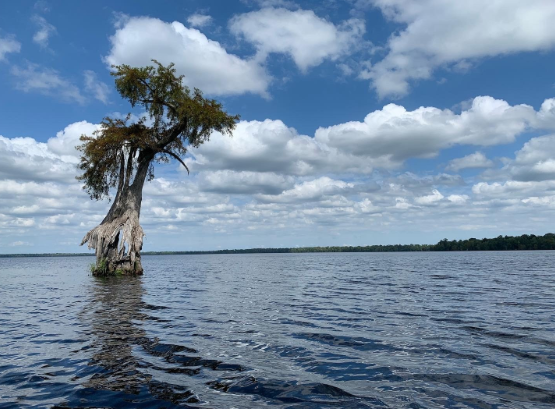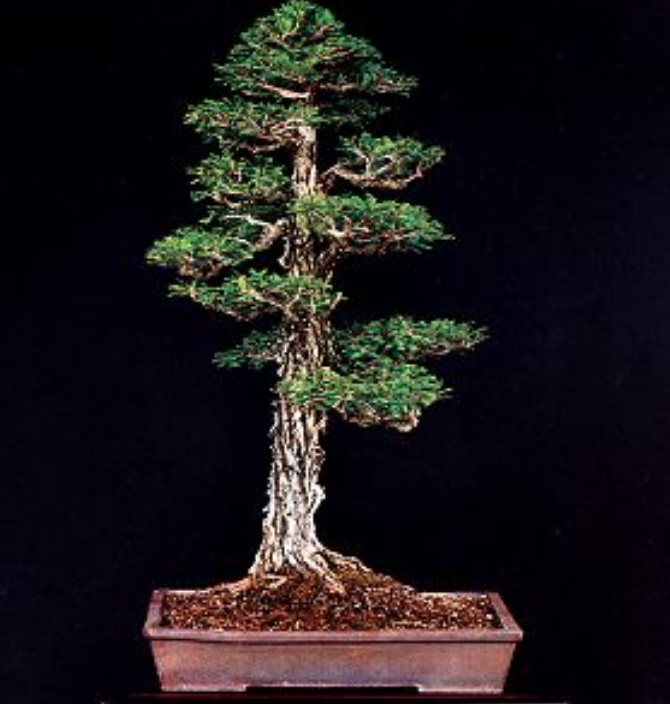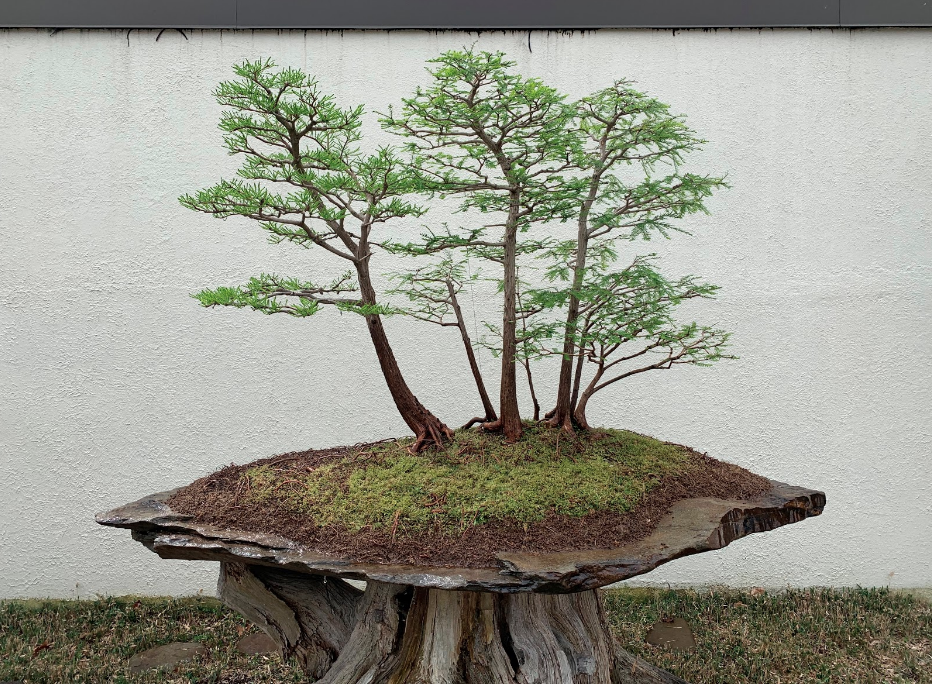A panoramic view of the Omiya Bonsai Art Museum’s bonsai garden in May. All photos courtesy of Omiya.
In August 2019, the National Bonsai & Penjing Museum established a historic Sister Museum partnership with the Omiya Bonsai Art Museum in Saitama City, Japan. For this edition of Bonsai Around the World, the National Bonsai Foundation is sharing the history and details of Omiya’s collections and staff members.
We had the pleasure of speaking with one of Omiya’s curators, Dr. Fumiya Taguchi, who first learned about bonsai while receiving a doctorate in Japanese art history – specifically picture scrolls and ukiyo-e prints, a genre of Japanese art popular from the 17th to 19th centuries.
Taguchi had very little knowledge of the art form until one of his mentors, who became the first director of the Omiya Bonsai Art Museum, recommended that Taguchi take a test for a curator position at Omiya. He was hired as a curator in 2009 when the museum was first opening – his first true introduction to the art form.
“I remember I was worried about what I could research because bonsai was an unknown field to me,” Taguchi said.
He quickly became fascinated by, and still dedicates time to, exploring bonsai history from the perspective of Japanese art history. Taguchi loves to delve into how people have thought about, created, described and spread bonsai throughout decades of bonsai appreciation.
“Bonsai is the creation by human hands of the ideal form of a natural tree living in the deep mountains,” he said. “Since ancient times, East Asians have believed that, through bonsai, they can transcend the mundane world and immerse themselves in the free world of nature while remaining at home. In other words, bonsai is a symbol of spiritual freedom.”
A Japanese White Pine named “Higurashi” in the decoration room
Omiya’s extensive collection contains an impressive 125 bonsai pieces and grass bonsai, 342 bonsai pot and tray displays, 69 suiseki pieces, 74 table pieces, 174 hanging scrolls and ukiyo-e prints and 57 historical materials.
Many bonsai are displayed in the museum’s indoor permanent exhibition hall along with suiseki, hanging scrolls, and nine seats, including traditional Zashiki decorations that change each week. About 60 bonsai are periodically displayed in the outdoor bonsai garden, while others are maintained in a backyard. Non-bonsai collections are found in a separate exhibition hall.
One of Omiya’s most treasured bonsai is a Japanese white pine called “Higurashi” estimated to be 450 years old and in training since 1933. The pine has been passed down through 11 owners, is the most famous bonsai in Japan and is the symbol of the Omiya Bonsai Art Museum.
Another famous Omiya bonsai is an ezo spruce named “Todoroki.” The spruce was collected on Kunashiri Island in Hokkaido in 1931 by Tomekichi Kato and his son Saburo Kato, the bonsai master known as the father of World Bonsai Day and one of the bonsai artists who opened Omiya Bonsai Village. The Kato duo’s spruce is estimated to be 1,000 years old and symbolizes the history of Omiya Bonsai Village.
A 150-year-old Chinese quince at the museum also boasts several famous owners, including former Prime Minister Eisaku Sato and former Prime Minister Nobusuke Kishi, the second Japan Bonsai Association president and the Japanese representative at the bicentennial bonsai donation to the United States.
Left: A scene from the monthly kids bonsai workshop.
Right: Bonsai Curator Mr. Nakamura (second from right) and Mr. Saito (far right) repotting a large black pine tree
But Taguchi doesn’t manage this massive collection alone. He and Dr. Shinichiro Hayashi lead curatorial operations for non-bonsai materials and exhibitions. Shinta Nakamura and Masayuki Saito, two bonsai artists who trained at Seiko-en, are full-time curators in charge of bonsai cultivation and management, while a bonsai artist from Omiya Bonsai Village works as an assistant.
Rumiko Ishida handles publicity and education, while Miyuji Tateishi recently joined Omiya as a curator for exhibitions and education. About 30 volunteer staff members work as visitor guides and workshop assistants, but they do not care for the bonsai.
Taguchi said Omiya is the only public museum in Japan that specializes in bonsai as a living work of art. The museum is the only one in the world that displays bonsai in tatami rooms, or traditional Japanese viewing rooms with tatami mats for flooring.
Omiya also produces specialized academic research on the history and culture of bonsai. The results are presented to the public through numerous historical and cultural materials.
The museum’s permanent indoor exhibition room takes visitors through more than 42 feet of a bonsai history panel display. The final section features a detailed explanation of the history of Omiya Bonsai Village. Trees from the village's garden are regularly displayed at the museum to expand local knowledge about the village and its bonsai.
The Omiya Bonsai Art Museum lobby
Taguchi added that the Sister Museum partnership between Omiya and the National Bonsai & Penjing Museum in Washington, D.C. helps to demonstrate the range of bonsai culture and interest to people in Japan.
“As representatives of each country, it is important for our two museums to introduce the expansion of bonsai culture in the other country through core projects such as history, culture, educational promotion and volunteer activities,” he said. “By deepening our relationship through the ‘language’ of bonsai and joint public relations, we can enhance the value of bonsai, revitalize the bonsai community on both sides and gain support for both museums as institutions of global importance.”
Taguchi said Omiya hopes to partner with other bonsai museums and botanical gardens around the world to promote the value of bonsai.
“By maintaining not only personal connections but also lasting relationships between museums, we will be able to build friendships around the world through bonsai, just as Saburo Kato said,” he affirmed.
Learn more about our Sister Museum on their website and follow them on Facebook and Instagram.
Left: the central part of the bonsai garden | Right: Curator Dr. Taguchi preparing for a lecture


















